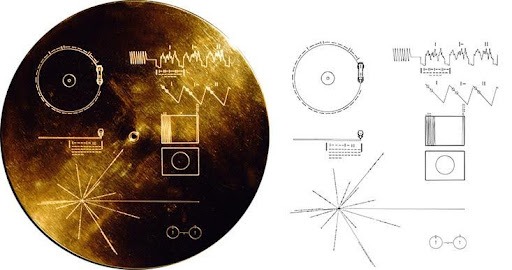The Voyager program is a groundbreaking scientific endeavor launched by NASA in 1977, comprising two interstellar probes, Voyager 1 and Voyager 2. Designed to study the outer Solar System and beyond, these probes have traversed billions of miles, entering the unknown expanse of interstellar space. These twin spacecrafts have traveled further than any human-made object, venturing into the unknown expanse of interstellar space.
Through Space India’s Space Explorers Workshop, “The Search for extraterrestrial life”, Participants step into the shoes of an Astrobiologist equipped with the SPACE Astrobiology Box and a Microscope to explore the most wonderful mysteries about life – What is it? Where should we look for It? How do we find it? Participants also examine precious Stromatolite samples – fossil records of oldest living things, create environments of different planets in a flask to study if life will survive it; observe a living organism reproduce under a microscope and much more.

A golden phonograph record was attached to each of the Voyager spacecraft that were launched almost 25 years ago called as Golden Record. It is a gold-plated copper record that contains sounds and images of Earth and human life. The record is a time capsule intended to communicate with any extraterrestrial life form that might encounter the spacecraft. The contents of the Golden Record include:
- Natural sounds like rain, wind, and animal calls,
- Musical selections from different cultures and eras,
- Human voices and greetings in 55 languages,
- Images encoded in the grooves of the record, including diagrams of the solar system, human anatomy, and scenes of everyday life.

The Voyager program was conceived to capitalize on a rare alignment of the outer planets in the late 1970s. The twin probes were designed to take advantage of this alignment, using the gravitational pull of each planet to propel them further into the cosmos.
The primary objectives of the program were to: Study the outer Solar System, including Jupiter, Saturn, Uranus, and Neptune. Explore the outer reaches of the heliosphere, the region influenced by the Sun and Enter interstellar space, the region outside our solar system.

Voyager 1 and 2: Where Are They Now?
As of July 2024, Voyager 1 is approximately 14.2 billion miles (22.8 billion kilometers) away from Earth, or about 125 AU (astronomical units) from the Sun. Voyager 2 is about 12.1 billion miles (19.5 billion kilometers) away, or 108 AU from the Sun. Both probes are now in the interstellar medium, the region of space outside our solar system.

Recent Discoveries:
Voyager 1 Entered Interstellar Space: In August 2012, Voyager 1 became the first human-made object to enter interstellar space, crossing the heliopause, the boundary between the heliosphere and the interstellar medium.
Voyager 2 Entered Interstellar Space: In November 2018, Voyager 2 followed suit, entering interstellar space and providing valuable insights into the conditions in this uncharted region.
Magnetic Highway: In 2019, Voyager 2 discovered a “magnetic highway” at the edge of the heliosphere, a region where the solar wind and interstellar magnetic fields interact.
Cosmic Ray Origins: Voyager 1 has provided evidence that cosmic rays, high-energy particles bombarding Earth, originate from outside the solar system.
Heliosphere’s Shape: Voyager 1 and 2 have helped scientists determine the heliosphere’s shape, revealing a more irregular structure than previously thought.
The Voyager program has achieved unprecedented success, pushing the boundaries of human exploration and scientific understanding. As the probes continue their journey into the unknown, they carry with them a message about humanity, etched on a golden record, a testament to our curiosity and ingenuity. As we look to the future of space exploration, the Voyager program serves as a reminder of the incredible feats that can be achieved with determination and scientific collaboration.
—
If you like the blog, enrol your school or yourself (k-12 student) in our School Programs or Online Programs, call us at +91-74020 74020 or write to us for any query: getintouch@space-india.com

